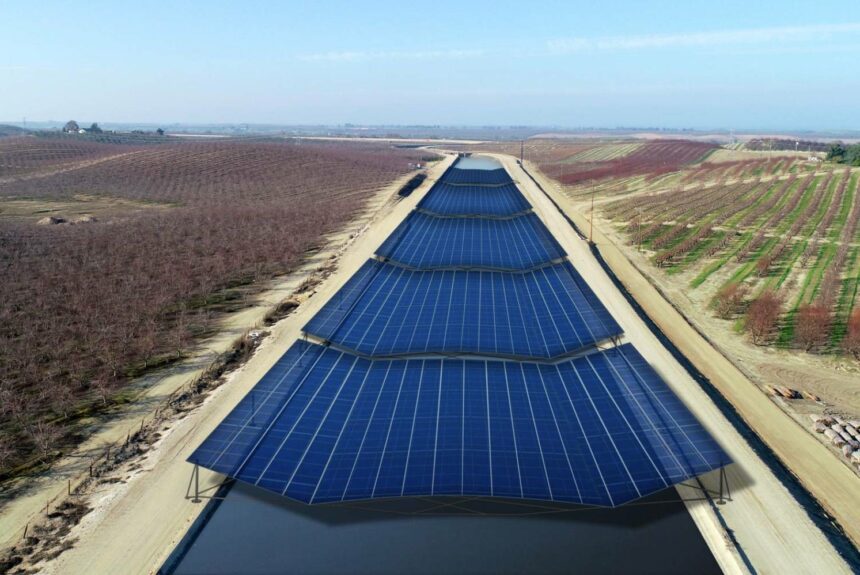Water is a big deal. For dry, Western states like California, preserving water is always a top priority. But expanding access to clean energy is also an important goal, one that we’re recognizing right now through National Clean Energy Week. Now, a new pilot project may just be able to accomplish both things at once.
The California Department of Water Resources, utility company Turlock Irrigation District (TID), Marin County, the University of California, Merced, and water and energy project developer Solar AquaGrid are partnering on Project Nexus. This project will test the efficacy of solar panel canopies installed over irrigation canals for energy generation and water retention.
>>>READ: Lake Erie Future Home to North America’s First Freshwater Offshore Wind Farm
Project Nexus will use irrigation canals controlled by TID as the test sites. A $20 million project, work will break ground either fall of 2022 or in early 2023 and is expected to be developed entirely by 2024. There will be two different locations for this pilot: a 500-foot span of a canal in Hickman, east of Modesto, and a mile of a canal in Ceres, a nearby town.
“If this is something that works on these first two miles of Project Nexus that we’re doing, there’s the potential that this could scale to multiple locations,” commented Josh Weimer, Turlock Water & Power’s external affairs manager.
Expanding this pilot project to cover more canals could have a significant positive impact. According to Electrek, covering all 4,000 miles of California’s canals in solar panels could potentially produce 13 gigawatts of renewable energy. A gigawatt can power roughly 750,000 homes, so 13 gigawatts could potentially power 9.75 million households across the state. In July of 2021, California had 13.1 million households.
The impact on water conservation could be equally significant. Roger Bales, a professor of engineering at the University of California, Merced, and a contributor to this project, wrote:
“In a 2021 study, we showed that covering all 4,000 miles of California’s canals with solar panels would save more than 65 billion gallons of water annually by reducing evaporation. That’s enough to irrigate 50,000 acres of farmland or meet the residential water needs of more than 2 million people. By concentrating solar installations on land that is already being used, instead of building them on undeveloped land, this approach would help California meet its sustainable management goals for both water and land resources.”
>>>READ: New Turbine Innovation Grows Wind Energy Output, Costs Nothing
Similar projects have been developed in other countries. But for the United States, this pilot in California would be the first venture into connecting solar with irrigation canals.
This project checks many boxes. Innovative, problem-solving for current issues, and practical in deployment. Time will tell whether this pilot shows results worth expanding. But, for now, future deployment of this technology could be a game-changer. As we celebrate National Clean Energy Week, we also celebrate the innovation that helps clean energy keep growing.
Kelvey Vander Hart is a native Iowan, a member of the American Conservation Coalition, and a communications specialist at Reason Foundation.
The views and opinions expressed are those of the author’s and do not necessarily reflect the official policy or position of C3.
